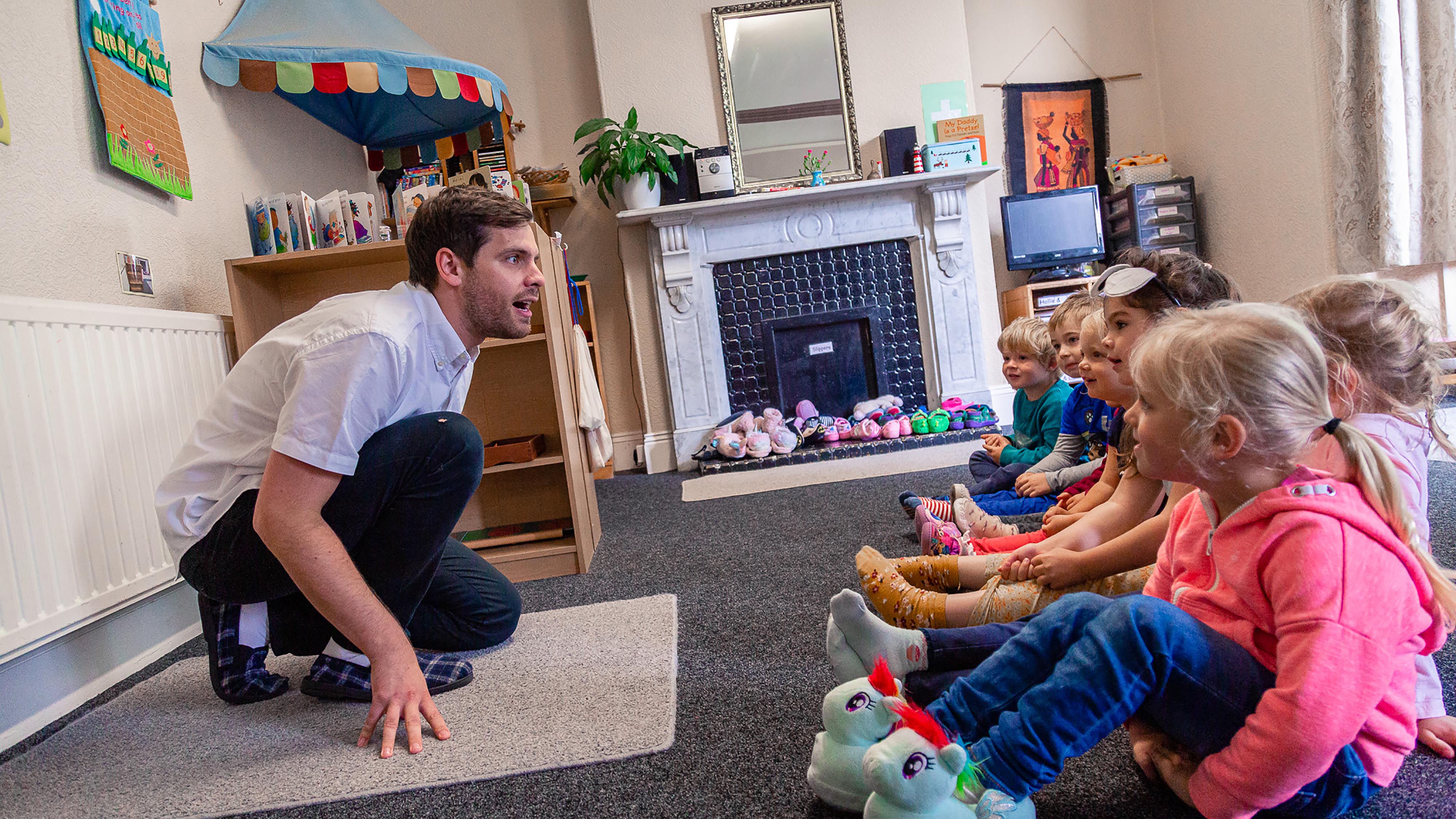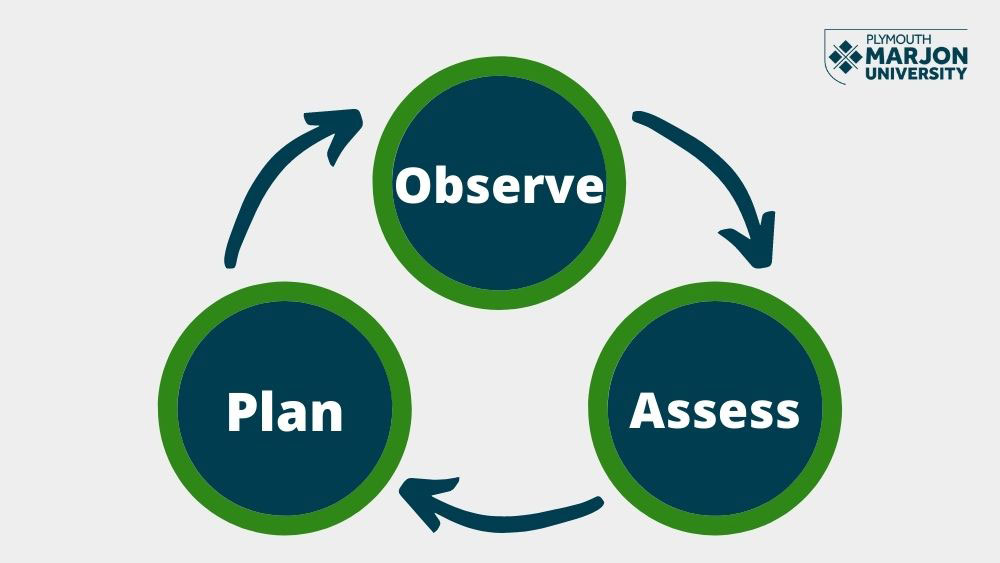Leadership in the Early Years
Leadership in the Early Years is about working in partnership with parents, staff from other agencies and your own team. Early Years leaders champion an open dialogue that positively influences outcomes for children, developing knowledge and mentoring their team to improve practice.
A lot of people tend to fall into leadership roles in Early Years, often without any training. Very often promising practitioners get promoted into leadership roles and are faced with new challenges. How do you balance lots of opinions when managing a team? How do you manage people who were recently your peers? How do you develop and evaluate policy for your setting? How do you develop your team? Early Years settings are learning communities that thrive when everyone is learning and adapting, and we should all aim to be constantly learning and adapting as leaders too.

Leadership in the Early Years should emphasise listening and communicating, and the team should be encouraged to express opinions to inform decision-making. It’s not about saying “I’m in charge so we’re doing it this way” but about having a two-way dialogue and listening to your team and your managers. You need to know what is happening day-to-day in your setting and have an eye on the ever-evolving policy setting.
In practice leadership in the Early Years means doing anything and everything. You’re in close contact with parents and other professionals, you’re shaping policy for your setting and you’re there to mentor and support your team. You’ll still sometimes change a nappy as you have to get stuck in to lead by example. Leadership in the Early Years is listening to staff, listening to children and families recognising the uniqueness of every child that you're working with.
What do Early Years leaders do?
In terms of policy, leaders may be responsible for budget, health and safety, child development, healthy eating management, leadership, quality, safeguarding, setting the curriculum and child welfare. As a leader in Early Years you’ll also be involved in preparing your setting for inspection by Ofsted, for more info see their Early Years Inspection Handbook.
One day you could be considering the structure of your setting, for example, whether to run mixed age group rooms for 2-5-year-olds or age specific rooms of 2 year olds only, weighing up the relative advantages of mixing older and younger children versus providing only age specific activities and resources. Another day you’ll be preparing very specific policies, for example determining when sun protection is required at your setting, what shading should be available and who should or should not have sun cream applied. No two days are the same.
How do I become an Early Years leader?
People get into Early Years due to a love of working with children. But to be an effective leader you also need to develop a vision for your setting and deliver a high standard of provision for children.
You need to look beyond the norms of your setting and question why are we doing it that way? You need to develop an enquiring criticality as well as an understanding of what best practice looks like. To reach the higher levels of leadership in Early Years you’ll generally need a qualification at level six or above or you might opt to become an Early Years Teacher.
It is proven that a highly trained and highly qualified Early Years workforce is good for children, right through from their first year at school to how well they do in their GCSEs.
The Professional Association for Childcare and Early Years (PACEY) reported: “The first five years of a child’s life have a long-term impact on his or her future health, wellbeing, and educational attainment. High quality childcare supports a child’s full development, including creativity, curiosity and self-confidence, which is essential not just for school but later life. And only high quality childcare has been found to improve children’s cognitive and social development outcomes and narrow the gaps between the most and least disadvantaged children.”
You don’t have to be the Manager or a Room Leader to start leading. If you want to be a leader in an Early Years then you’ve probably got lots of opportunities to lead. Ask to take responsibility for something or lead an informal session to share and develop good practice amongst your colleagues. Small steps like these give you a better understanding of why you do things the way you do. And by explaining your approach to your colleagues you'll build your confidence (and theirs) in what you’re doing.
Mentoring in Early Years
When a team member qualifies at level 2 or level 3 there is still a huge amount to learn. So to improve maintain and improve their skills it’s key that Early Years leaders enable sound mentoring practice.
To mentor is to develop independence, not dependence. It is future-focused because it aims to upskill the mentee. It’s collaborative, requiring commitment and mutual trust between mentor and mentee.
The mentor is ideally a colleague who is not the line manager of the mentee, though many line managers do mentor their direct reports, either formally or informally so don’t rule that out.
Mentoring should be confidential, with nothing shared unless there are any concerns about the safety of others. It also needs defined goals, an agreed frequency of meetings and an end date. The focus is always on the outcomes for children.
Hannah Holdgate, who leads Early Years teacher training at Plymouth Marjon University, explains why many Early Years leaders are well equipped to start mentoring their teams: “Every child you work with is going to be different so we need to constantly be changing and thinking about what works best for these children, at this moment in time. What are their individual unique needs? We focus on the overriding principle of the unique child, and the importance of having strong relationships and positive relationships. Actually, when you think about mentoring Early Years team members, a lot of the techniques you already know from supporting young children can be helpful. You’re encouraging people to think for themselves, and to problem solve, and that’s what we do when we're mentoring adults effectively.”
Observe, assess, plan (OAP) cycle

The observe, assess, plan (OAP) cycle can help you to understand what you're seeing. Observation (O) means watching the children, listening to them and noting what we see and hear. Assessment (A) is analysing our observations and deciding what they tell us about the child’s progress, and understanding the child’s needs as expressed by the parents. Plan to support (P) is being intentional about the next steps in the child’s development and learning.
Mentoring is about developing listening skills, communication skills and being able to reflect on your practice. It also means being willing to learn and to grow from your mistakes.
There are lots of models around mentoring but Holdgate advocates developmental mentoring models, which involve everyone learning from each other. The alternate being sponsorship models where the mentor is considered more knowledgeable and directs the (usually younger) junior practitioner. She explains: “Just because I have more experiences than someone else, or they have more experience than me, it doesn't mean we can't learn from each other. It’s a co-existing relationship, after all you’re both trying to provide the best possible care for the children you're working with. The developmental mentoring model focuses both mentor and mentee on the unique child and the best possible outcomes for them. They listen to one another and understand that no-one has dealt with exactly this situation before because every child is unique.”
An example of effective Early Years mentoring
Effective mentoring means getting people to think for themselves, to keep trying and to reflect on their practice. Let’s take the example of a mentee encountering a child who bites. An early years practitioner needs to know that there are heaps of reasons why a child might bite and should think and reflect on what might be happening.
The mentor can help by asking questions like:
- Is there anything unusual about the child’s behaviour?
- What have the child’s parents told you recently about how the child is doing?
- What was happening shortly before the incident?
- Has something similar happened before? How was the child involved before?
- What did the child do straight after the incident?
In this way, the mentee learns to question the situation. Is the child who bites feeling frustrated or trapped? Is it to do with teething or sensory processing? Are they copying another child? The mentor can guide the mentee to be aware of antecedent behaviour, that’s the behaviour that precedes the biting, and ask them what they’ll do if they observe the child doing it again.
We are richest when we're diverse and different, and value lies in getting people to question things for themselves. If we all think the same then that won't get the best outcomes for the children in our care.
Looking for a course for Early Years leaders? Plymouth Marjon University offers:


